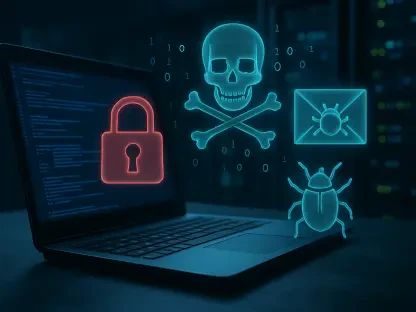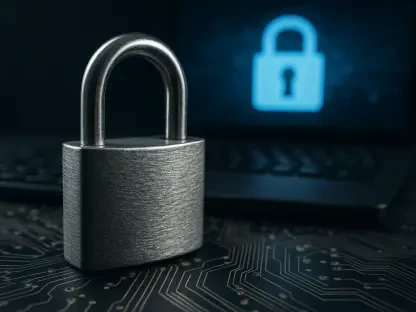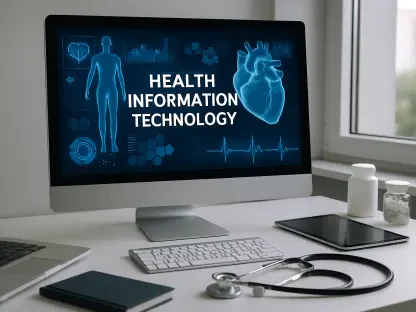Patch management stands as a crucial aspect of cybersecurity, particularly for state and local governments tasked with maintaining vital infrastructure and services. The importance of timely and effective patch management cannot be overstated, as failure to adequately implement these updates leaves systems exposed to a myriad of cyber threats. Consequently, neglecting patch management can lead to significant vulnerabilities, entailing severe operational disruptions and financial losses. This article delves into the significance of patch management, the challenges faced by governmental entities, and effective strategies to ensure robust cybersecurity.
The Importance of Patch Management
Patch management plays a vital role in closing security holes that malicious entities might exploit. Timely updates and patches are indispensable for protecting systems against malware, ransomware, and various other cyber threats. Systems that lack regular patching remain vulnerable, making them prime targets for cybercriminals. This vulnerability can result in substantial operational disruptions and financial losses, emphasizing the necessity of efficient patch management.
For example, the cost of ransomware recovery for state and local governments skyrocketed from $1.21 million in 2023 to $2.83 million in 2024. This stark increase sharply highlights the financial repercussions of neglecting essential patch management. Effective and prompt application of updates can mitigate these significant risks, thereby protecting crucial infrastructure. Timely patch management acts as a preventative measure, safeguarding systems from potential cyber attacks and their associated costs.
Impact on Critical Infrastructure
Critical infrastructure such as water treatment plants, power grids, and emergency response systems faces heightened vulnerability to cyber attacks. These systems are integral to public safety and well-being, and any disruption within these infrastructures can have far-reaching consequences. Cyber attacks targeting such critical systems can expose sensitive citizen information and result in severe legal consequences due to inadequate security standards. The potential ramifications underscore the essential need for effective and regular patch management.
When critical infrastructure remains unpatched, it opens up avenues for cybercriminals to disrupt essential services. The impact of such disruptions can range from minor inconveniences to life-threatening situations, thus maintaining system integrity through diligent patch management becomes paramount. By keeping these systems up to date and applying patches in a timely manner, governments can ensure the continuous and secure operation of these essential services, fostering public trust and safety. Proactive patch management is not just a technical necessity but a public responsibility, ensuring that vital services remain functional and secure.
Challenges in Patch Management
State and local governments face multiple challenges in implementing effective patch management strategies. Among the most common issues are limited IT resources and budget constraints, which significantly hinder the ability to keep systems up to date. Additionally, many government agencies continue to rely on complex legacy systems that are notoriously difficult to update and secure, further complicating the patch management process.
Beyond resource limitations and outdated systems, there often exists a general lack of understanding regarding the importance and execution of effective patch management. Many employees and stakeholders may not fully grasp how critical patch management is to overall cybersecurity. This lack of awareness necessitates comprehensive education and training initiatives to highlight the significance of timely updates. By addressing these challenges and fostering an organizational culture that prioritizes cybersecurity, including patch management, governments can enhance their overall cyber defense mechanisms.
Strategies for Effective Patch Management
Prioritization
One crucial strategy for successful patch management is the prioritization of patches based on severity, potential impact, and compliance requirements. Utilizing risk-based assessments and conducting regular vulnerability scans can help identify the most critical patches warranting immediate attention. This approach ensures that significant vulnerabilities are addressed swiftly, substantially reducing the risk of cyber attacks on government systems.
Moreover, a prioritized patch management strategy involves evaluating the potential risks associated with unpatched software and applications. By directing resources and efforts toward the most pressing issues, governments can mitigate the most significant threats. It is essential to maintain an iterative and dynamic approach, continuously reassessing system vulnerabilities. This strategy helps establish a robust and responsive patch management framework that aligns with evolving cybersecurity challenges.
Deployment Strategies
Effective patch management also necessitates precise and strategic deployment methods to minimize risks and maintain system stability. Phased deployment strategies, such as canary and blue-green deployments, are particularly useful in this context. Canary deployments involve initially testing updates in smaller, controlled environments before implementing widespread rollout, thereby identifying any potential issues early on. Blue-green deployments, on the other hand, operate by switching between active and standby environments, ensuring seamless updates with minimal system disruptions.
These deployment strategies play a pivotal role in ensuring that patches are applied smoothly without introducing new issues or affecting system availability. By thoughtfully planning and executing these strategies, governments can maintain the integrity and security of their systems throughout the patching process. Such meticulous deployment practices ensure that critical infrastructure remains operational and protected against emerging cyber threats, reinforcing the overall cybersecurity posture of government agencies.
Automation
Automation significantly enhances the patch management process by ensuring timely and accurate application of updates. Platform engineering practices can integrate automated tools into continuous deployment processes, streamlining the patch management workflow and greatly reducing the potential for human error. Automated systems can quickly identify and patch vulnerabilities, maintaining up-to-date security protocols across all government systems.
Leveraging automation in patch management allows governments to handle updates more efficiently, ensuring consistent and prompt patch application. This approach not only improves security but also frees up IT resources, allowing personnel to focus on other critical tasks. By incorporating automation, government agencies can establish a more resilient and responsive cybersecurity infrastructure, capable of addressing vulnerabilities in real time.
Education and Training
Comprehensive education and training programs are essential for emphasizing the importance of patch management within government organizations. Such initiatives should cover best practices for working with legacy systems and the significance of timely patch application. By educating employees about the risks associated with unpatched systems, governments can foster a culture of cybersecurity awareness and vigilance.
Investing in education and training empowers staff to actively participate in maintaining cybersecurity, ensuring that patch management is prioritized and executed effectively across the organization. This proactive approach helps build a knowledgeable workforce capable of identifying and addressing potential vulnerabilities. By reinforcing the importance of cybersecurity through ongoing training, governments can enhance their overall patch management efforts and safeguard critical infrastructure from cyber threats.
Conclusion
Patch management is a pivotal element of cybersecurity, especially for state and local governments responsible for critical infrastructure and essential services. The significance of timely, effective patch management cannot be overstated; neglecting these updates can expose systems to numerous cyber threats. This negligence can lead to severe vulnerabilities, resulting in major operational disruptions and financial losses.
Addressing the challenges faced by government entities in managing patches is essential. Governments often deal with complex, legacy systems which can make patch implementation difficult. Additionally, limited budgets and resources constrain the ability to maintain current software updates.
Effective strategies for robust cybersecurity include establishing a standardized patch management protocol, regularly auditing systems to ensure updates are applied, training staff on cybersecurity best practices, and leveraging automated tools to streamline the update process. By prioritizing patch management, state and local governments can safeguard their systems, thereby protecting critical infrastructure and the services they provide from potential cyberattacks.









